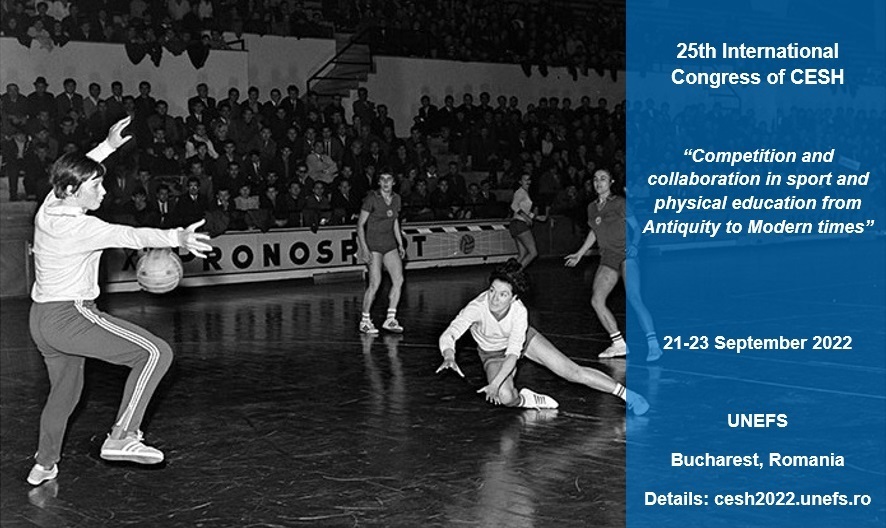
The National University of Physical Education and Sport of Bucharest will host the 25th Congress of the European Committee for Sports History (CESH) from 21 to 23 September 2022. The theme chosen by the organisers is ‘Competition and collaboration in sports history from Antiquity to Modern times’. Hence, we are inviting scholars at all career stages from all over the world to critically explore the way in which this duality in sports has been constructed, presented and questioned in the past.
Competition and collaboration are two essential dimensions for the culture of sport and physical education. Instances can be identified since the Antiquity. Defined as ‘a contest in which on the basis of shared understandings and procedures, a winner emerges’, competition was associated in Ancient Greece and the Roman Empire with the idea of spectacle and public performance. Later, competition referred to being best at handling military equipment, even if it was a bow, a sword, a horse, a spear, a gun or simply the human body. More recently, various forms of sporting competition were identified in the pre-modern times. Nevertheless, since the modern days competition in sports is generally conceived of as crucial for improving athletes’ performances and their visibility in society. The last century saw the diffusion of sport at a large scale, in parallel with the growth of competitiveness among individuals and teams, and this led to the establishment of major competitions.
Sport and physical education also generated collaboration, through camaraderie, for example. Cooperative impulses animated the joint endeavours of sports clubs, sports associations, fans groups, federations, organizations, PE classes or sports companies. Collaborations between teammates, pupils, between coaches and athletes, between clubs, federations and organisations set some marks in the history of sports and generated fascinating stories. For example, the interrelation of certain ‘players’ participating in this complex network of collaboration characterizes early modern sports. Over the years, the partitioned, specialised, multisectoral, and interconnected nature of the sports industry provided a dynamic impulse for interpersonal or interorganisational partnerships. Collaborations have had mixed results, some were successful, while others have failed.
Given the essential dimension of competition and collaboration and the learning, teaching and training processes, there is a need for in-depth historical analysis of these two dimensions and of their effects on society.
Possible topics for panels and individual papers include, but are by no means limited to:
- Competition(s) histories. Various types of competitions could be presented and analysed through their geographic dimension (local, regional, national or international), or the number of athletes involved (individual or team competitions);
- Forms of collaboration. This topic covers collaboration between athletes, coaches, fans, pupils, teachers or sport or education entities, but it also considers other dimensions of collaboration in sport, like sport diplomacy. Collaborative research of sport historians could be also added;
- Shifts in the history of sport. From competition to collaboration and from collaboration to competition is just one suggested direction which could be explored. In fact, different types of changes in terms of collaboration or competition can occur.
- The social, cultural, political, economic and legal responses to education, competition and collaboration in sports and PE over the years. This topic covers various issues, like religion and sport, PE in competition and collaboration, influence of technology and science in sport and PE, the relationship of sport and PE with politics, communities’ reactions to competition and collaboration in sport, or judicial reactions to sport issues in the past.
- Peoples, symbols and moments of competition and collaboration. Sports history has provided heroes and losers, visible and discrete actors who have produced significant moments for history of sport and physical training. In this direction, we expect biographies of various sport and PE figures, but also presentations of other actors, individuals, teams, organisations or institutions. Other aspects of competition and collaboration could be analysed, like gender issues, sport for people with disabilities or symbols, actors and moments of the Olympic movement.
- The dark side of sporting competition. Presentations about how the ethics of competition and collaboration are challenged and which are the negative consequences in history of sports. Racism, violence, bribery, corruption, match-fixing are few aspects which are part of the competition, which could generate proposals that interest us.
Other proposals related to sports history are also welcomed.
